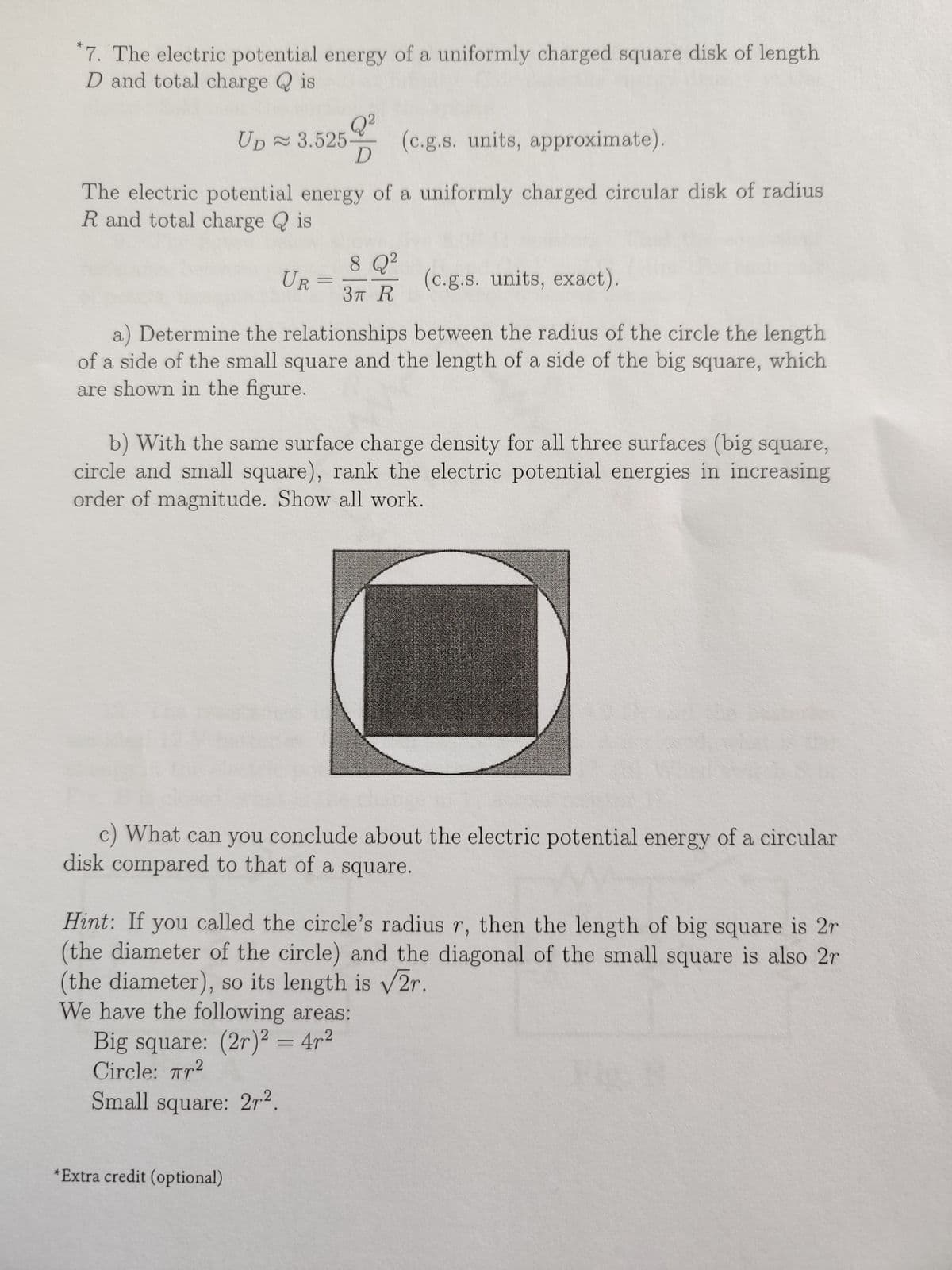*7. The electric potential energy of a uniformly charged square disk of length D and total charge is Q² UD 3.525- (c.g.s. units, approximate). The electric potential energy of a uniformly charged circular disk of radius R and total charge is UR (c.g.s. units, exact). a) Determine the relationships between the radius of the circle the length of a side of the small square and the length of a side of the big square, which are shown in the figure. 8 Q² = 3T R b) With the same surface charge density for all three surfaces (big square, circle and small square), rank the electric potential energies in increasing order of magnitude. Show all work.
*7. The electric potential energy of a uniformly charged square disk of length D and total charge is Q² UD 3.525- (c.g.s. units, approximate). The electric potential energy of a uniformly charged circular disk of radius R and total charge is UR (c.g.s. units, exact). a) Determine the relationships between the radius of the circle the length of a side of the small square and the length of a side of the big square, which are shown in the figure. 8 Q² = 3T R b) With the same surface charge density for all three surfaces (big square, circle and small square), rank the electric potential energies in increasing order of magnitude. Show all work.
Related questions
Question
PP7

Transcribed Image Text:7. The electric potential energy of a uniformly charged square disk of length
D and total charge is
*
Q²
D
UD≈ 3.525 (c.g.s. units, approximate).
The electric potential energy of a uniformly charged circular disk of radius
R and total charge is
(c.g.s. units, exact).
a) Determine the relationships between the radius of the circle the length
of a side of the small square and the length of a side of the big square, which
are shown in the figure.
UR
8 Q²
=
*Extra credit (optional)
3T R
b) With the same surface charge density for all three surfaces (big square,
circle and small square), rank the electric potential energies in increasing
order of magnitude. Show all work.
c) What can you conclude about the electric potential energy of a circular
disk compared to that of a square.
Hint: If you called the circle's radius r, then the length of big square is 2r
(the diameter of the circle) and the diagonal of the small square is also 2r
(the diameter), so its length is √2r.
We have the following areas:
Big square: (2r)2 = 4r²
Circle: Tr²
Small square: 2r².
Expert Solution
This question has been solved!
Explore an expertly crafted, step-by-step solution for a thorough understanding of key concepts.
Step by step
Solved in 2 steps
